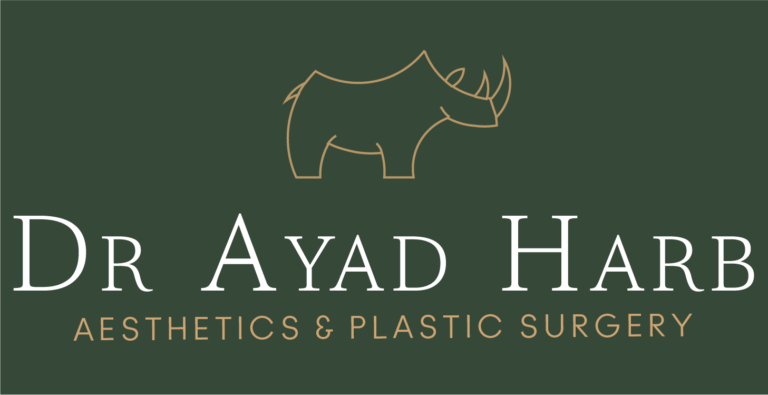Thinning Hair
Hair thinning is a gradual and minor to moderate loss of hair, which can give the appearance of thinner spots or sparsity of hair on your head. Unlike widespread hair loss, however, it doesn’t necessarily lead to baldness. Thinning hair may be caused by lifestyle, genetics, or both. Lifestyle habits are a key contributor to thinning hair. These include over-treating hair with colours, sprays and straighteners or wearing your hair too tightly. Treatments start at home by adjusting your hairstyle and lifestyle! In the clinic, we offer a selection of treatments that will help to reduce hair loss and thinning. Mohammed Harb is our cosmetic pharmacist and is an expert in hair restoration and pharmaceuticals. Treatments may include supplements and medications, PRP plasma treatments and energy devices such as Radiofrequency and low level laser therapy.
Receding hairline
A receding hairline can start to develop in men as they age. In many cases, hair loss can be treated with medications and surgery. Although it is possible for women to experience receding hairline, they are more likely to be affected by thinning hair.
For men, a receding hairline can start from as young as the early twenties and typically progresses in a predictable pattern. The average person’s scalp has about 100,000 hairs that grow from follicles that are embedded deep within the layers of the scalp. These hairs go through a cycle of dormancy, growth and eventually are shed, only to be replaced by new hairs. If this hair cycle is disturbed by medications, ageing, hormones or due to genetic factors, the result can be a receding hairline. A family history of male pattern baldness is a strong risk factor, in fact the timing of hair loss is often similar from one generation to the next. Hormone fluctuations can play a role in hair loss as can certain medications.
The treatments for a receding hairline are aimed at halting the rate of hair loss by stimulating the remaining hair follicles. Examples of these are Minoxidil, Finasteride and even steroids in certain cases. Other nonsurgical treatments which promote hair growth by stimulating the follicles in the scalp are PRP-plasma and low level laser treatments. Ultimately, the best treatment to restore hair growth and replace hair follicles is surgical hair transplantation. Mohammed Harb is our cosmetic pharmacist and specialises in hair loss treatments.
Excessive hair
The face and body are normally covered by a layer of fine hair (peach fuzz). However excessive hair growth in women can occur due a number of conditions such as hirsutism and hypertrichosis, which cause coarse dark hair to grow on the face, arms or legs. Hirsutism is estimated to affect 5-10% of women. It can run in families and is more common in certain ethnicities. Patients often present with feelings of self-consciousness and embarrassment. The common causes are Polycystic Ovarian Syndrome, hormone imbalances and certain medications. The treatment will depend on the cause of the excessive hair. Hair removal can be achieved through the use of waxing, electrolysis and laser hair removal. These treatments are offered by our team of expert therapists.
Sparse eyelashes
Eyelashes protect the eyes from light debris. They also act like sensors that warn the eyes of potential danger when objects come close.
Sparse or thin eyelashes fall under a condition called eyelash hypotrichosis. People with hair loss, called alopecia, sometimes experience the thinning of eyelashes. Of course, eyelashes are very important for the overall aesthetic of the eyes and face. Eyelash enhancement is extremely popular whether it is by way of makeup or cosmetic treatments.
There are many home remedies that purport to enhance the eyelashes – use these with care, as some can cause injury or allergy. The only proven remedy to lengthen your eyelashes is to carefully use medication. Bimatoprost (Latisse) is the only medication that is FDA approved for eyelash enhancement. It is proven to make eyelashes grow longer and thicker. It was originally developed as a medication called Lumigan to treat glaucoma, but researchers found that eyelash growth was a side effect. Your doctor can prescribe Latisse, which you apply regularly to the lash line of the upper eyelid (not the lower eyelid). It delivers full results when used daily for at least two months. For more information, you can discuss with Mohammed Harb, who is our cosmetic pharmacist and expert in hair restoration.
Patchy beard
Hair thinning in the beard can lead to visible patches, which can become a source of embarrassment for the patient and prevent them from wearing any facial hair. Thinning hair may be caused by lifestyle habits, genetics, or both. Lifestyle habits are a key contributor to thinning hair. These include over-treating hair with colours, lotions and oils, or even hair pulling and laser treatments. Treatments start at home by adjusting your hairstyle and lifestyle! In the clinic, we offer a selection of treatments that will help to reduce hair loss and thinning. Mo is our cosmetic pharmacist and is an expert in hair restoration and pharmaceuticals. Treatments may include supplements and medications, PRP plasma treatments and energy devices such as Radiofrequency and low level laser therapy. Ultimately, the best treatment to restore hair growth and replace the missing hair follicles is surgical hair transplantation.
